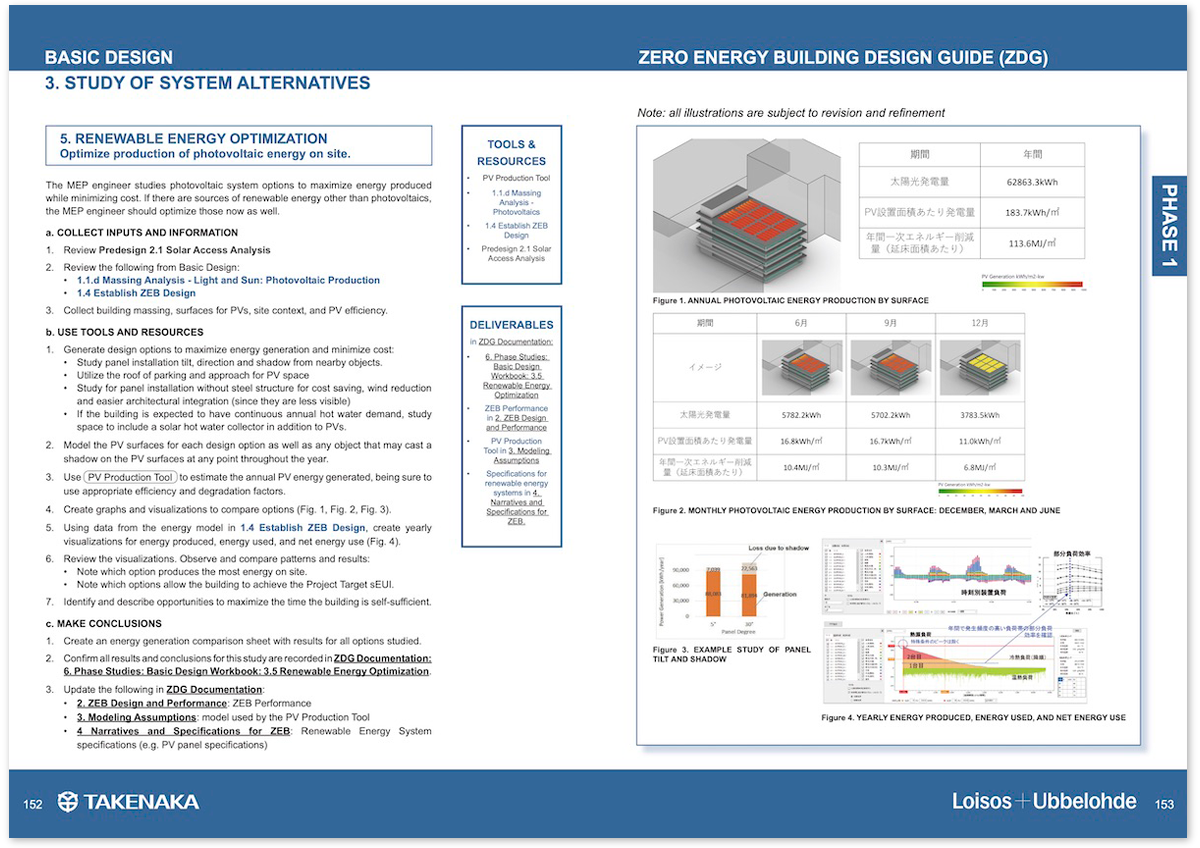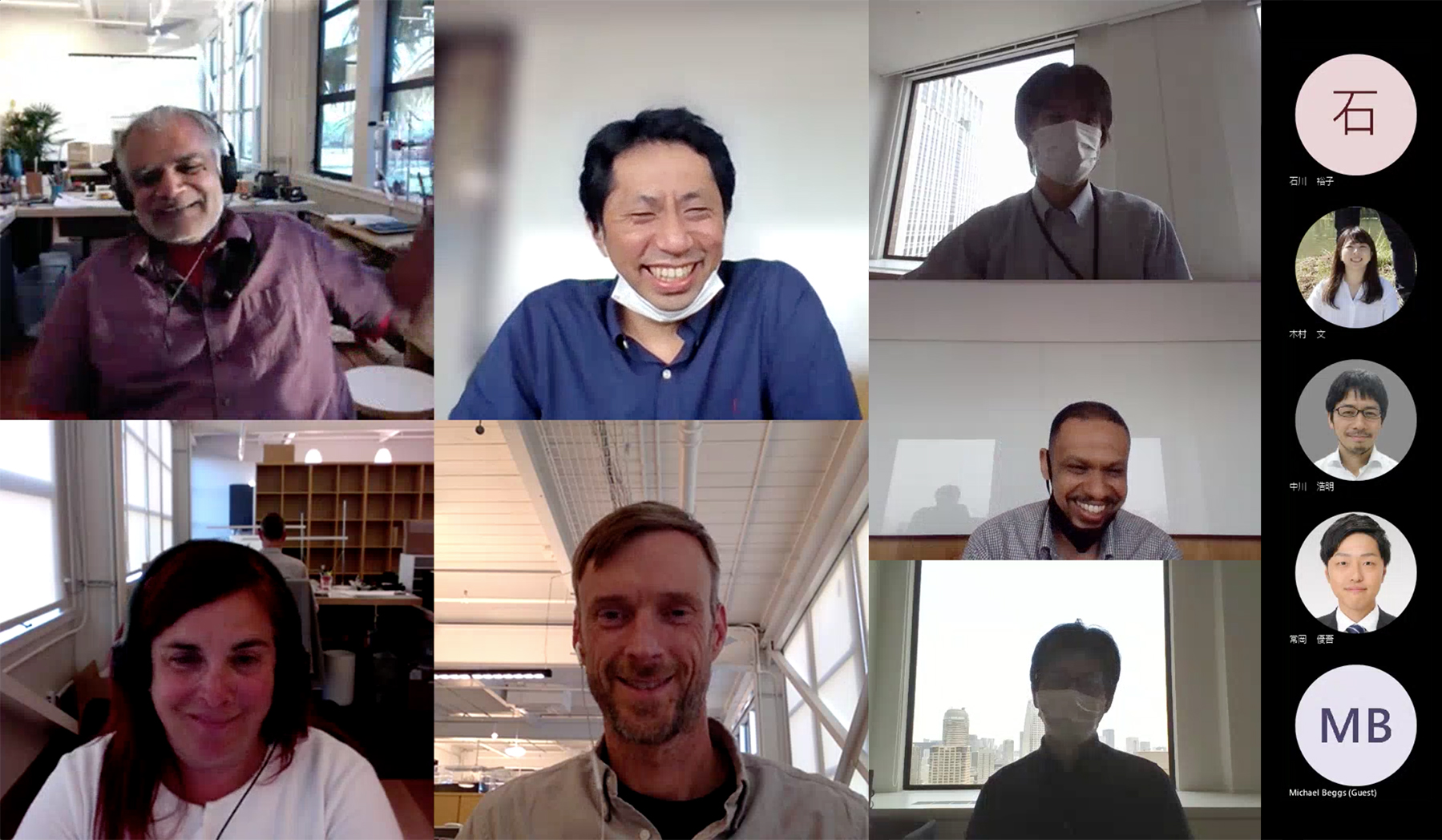EXPERTISE
Takenaka Zero Energy Building Design Guide
Takenaka Corporation is among Japan’s oldest and largest general contractors with a storied history. Rich in tradition spanning over 400 years, Takenaka’s legacy includes creating many of Japan’s prominent architectural landmarks. In response to climate change, Takenaka identified the need to prioritize zero-energy and zero-carbon performance in its work. To do this, they have set a path to rapidly evolve their practice to serve the needs of a changing market in Japan and globally. With nearly 7,600 employees worldwide (including 2,400 architects), the scale presented challenge to realize as well as an opportunity to create meaningful impact. How could Takenaka maintain its legacy and commitment to superior design while also leading the industry to address pressing environmental concerns? To respond, L+U helped to develop a Zero Energy Building Design Guide (ZDG) and the supporting Zero Energy Building Integrated Analysis (ZEBIA) toolset for Takenaka.
In developing a collaboration with Takenaka, Loisos + Ubbelohde brought a wide range of experience relevant to Takenaka’s challenge. Our portfolio include more than 20 years of projects at the forefront of sustainable design. We also had experience bringing this knowledge to a variety of audiences and organizations, from higher education to professional development to working with large organizations, including universities, develop programs in sustainable design. Recently we helped the University of Hawai’i at Manoa develop a comprehensive set of sustainability standards for campus building development. The Hawai’i Building Design and Performance Standards are an example of how a guideline for sustainability can be based on a specific institutional design/delivery process, including owners, designers, engineers, and contractors, to deliver a more sustainable campus for the future. In early 2020, Takenaka commissioned L+U to create a Zero Energy Building (ZEB) Design Guide, assist in the development of the supporting Zero Energy Building Integrated Analysis (ZEBIA) toolset, and to advise on other efforts to shift their practice toward delivery zero energy and zero carbon architecture.
SERVICES
We used a multi-pronged approach to help Takenaka achieve this significant shift in their design and delivery process. The Zero Energy Building (ZEB) Design Guide formalized their design process to formally include zero energy performance goals, knowledge, design methods and techniques. The Guide addresses the full range of a project life, from predesign phase through commissioning and post-occupancy, in terms of the energy and carbon impacts of design decisions. To support the use and integration of the ZEB Design Guide and ZEBIA tools, L+U also assisted Takenaka in the development of documentation, reference materials, and management best practices.
The collaboration launched in 2020, simultaneously with the pandemic. It included a series of workshops (virtual and in-person), peer review of material developed by L+U and Takenaka, and a “Road Test” of the ZEB Design Guide to validate and improve processes in the Guide. The project achieved several important outcomes, including the establishment of an ongoing trans-Pacific collaboration, the rapid development of Takenaka sustainable design capabilities, and the release of The ZEB Design Guide across the Takenaka organization in April, 2023.
The collaboration uses both virtual and in-person formats, achieving efficiency of online collaboration as well as the rapport earned through face-to-face meeting.
In 2024, the project received the highest honor in the Energy Conservation Grand Prize in the Product and Business Model Category: out of 120 applicants, it was one of 4 projects to receive the Ministry of Economy, Trade and Industry Grand Prize. A highly competitive and prestigious prize in Japan, projects undergo a rigorous 6-month screening process and must demonstrate outstanding innovation and potential for societal-scale impact.
AWARDS
2024 Winner, Japan Energy Conservation Grand Prize, Business Model Category
Project Details
LOCATION: Japan



